Oral Session
Gradients & RF Optimization
ISMRM & ISMRT Annual Meeting & Exhibition • 03-08 June 2023 • Toronto, ON, Canada

| 13:45 |
1228.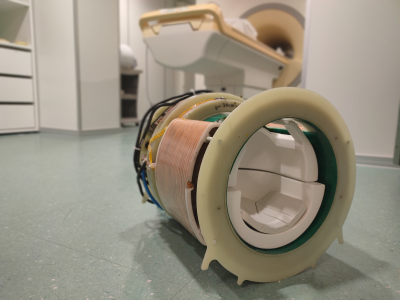 |
Accelerating beyond the sound limit: Ultrasonic Wave-CAIPI using
a dual-axis head gradient insert
Thomas Roos1,
Jeroen Siero1,2,
Dennis Klomp1,
Matthias Wienke1,
Jannie Wijnen1,
and Edwin Versteeg1 1Department of High Field MR Research, University Medical Center Utrecht, Utrecht, Netherlands, 2Spinoza centre for Neuroimaging, Amsterdam, Netherlands Keywords: Gradients, New Trajectories & Spatial Encoding Methods, Ultrasonic In this work, we present peripheral nerve stimulation and imaging results for a dual-axis head gradient that operates at ultrasonic frequencies. PNS measurements on 4 volunteers did not yield any noticeable stimulation. Imaging was performed using an ultrasonic Wave-CAIPI MP-RAGE, which featured ~20-fold acceleration and fully-sampled K-space coverage. We show the first images with this approach and a g-factor close to unity. |
| 13:53 |
1229.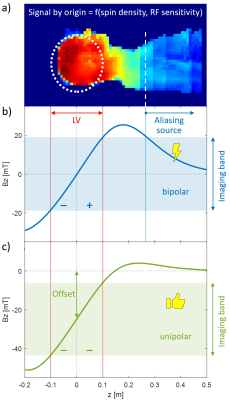 |
Unipolar design of head gradients for eliminating the encoding
ambiguity
Markus Weiger1,
Johan Overweg2,
Franciszek Hennel1,
Emily Louise Baadsvik1,
Samuel Bianchi1,
Oskar Björkqvist1,
Roger Luechinger1,
Jens Metzger3,
Eric Michael1,
Andreas Port1,
Christoph Schildknecht1,
Schmid Thomas1,
Urs Sturzenegger4,
Gerrit Vissers5,
Jos Koonen5,
Wout Schuth6,
Jeroen Koeleman6,
Martino Borgo6,
and Klaas Paul Pruessmann1 1Institute for Biomedical Engineering, ETH Zurich and University of Zurich, Zurich, Switzerland, 2Philips GmbH Innovative Technologies, Hamburg, Germany, 3Institute for Energy and Process Engineering, ETH Zurich, Zurich, Switzerland, 4Philips AG, Zurich, Switzerland, 5Philips Healthcare, Best, Netherlands, 6Futura Composites BV, Heerhugowaard, Netherlands Keywords: Gradients, High-Field MRI, Ambiguity Gradients with a conventional, bipolar design generally face a trade-off between performance, encoding ambiguity, and circumventing the latter by means of RF selectivity. This problem is particularly limiting in cutting-edge brain imaging performed at field strengths ≥ 7T and using high-performance head gradients. To address this issue, the present work proposes to fundamentally eliminate the encoding ambiguity in head gradients by using a unipolar z-gradient design that takes advantage of the signal-free range on one side of the imaging volume. This concept is demonstrated by design of a unipolar high-performance head gradient and simulated 7T imaging with such a system. |
| 14:01 |
1230. |
Modeling of Gradient-Induced Magnet Heating using Equivalent
Current Surface and Multi-Physics Finite-Element Methods
Alexander Bratch1,2,
Peter B. Roemer3,
Gregor Adriany2,
Kamil Ugurbil2,
and Brian K. Rutt1 1Department of Radiology, Stanford University, Stanford, CA, United States, 2Center for Magnetic Resonance Research (CMRR), Department of Radiology, University of Minnesota, Minneapolis, MN, United States, 3Roemer Consulting, Lutz, FL, United States Keywords: High-Field MRI, High-Field MRI With increasing prevalence of ultra-high field magnets and high-performance gradients, it is important to understand gradient-induced magnet heating, which can yield significant helium boil-off. Here, we propose a method to model this effect requiring no knowledge of gradient coil construction. Using measured gradient stray fields, we construct equivalent current surface models of gradient coils that can be input into finite element model of magnet systems to predict the deposited energy. We validate this equivalent current surface method using a gradient with a known winding pattern and further validate the energy deposition models by measuring power deposition in a 7T magnet. |
| 14:09 |
1231.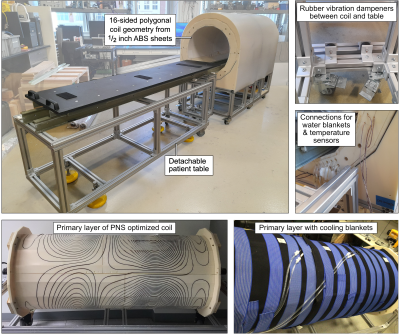 |
Experimental Validation of a PNS Optimized Body Gradient Coil
Mathias Davids1,2,
Livia Vendramini1,
Valerie Klein1,2,3,
Natalie Ferris4,5,
Bastien Guerin1,2,
and Lawrence L. Wald1,2,5
1Martinos Center for Biomedical Imaging, Massachusetts General Hospital, Charlestown, MA, United States, 2Harvard Medical School, Boston, MA, United States, 3University Clinics Mannheim, Computer Assisted Clinical Medicine, Mannheim, Germany, 4Harvard Graduate Program in Biophysics, Harvard University, Cambridge, MA, United States, 5Harvard-MIT Division of Health Sciences and Technology, Cambridge, MA, United States Keywords: Gradients, Gradients, gradient coil design, high-performance imaging We report experimental PNS threshold measurements of an asymmetric PNS optimized whole-body gradient coil and compare it to a standard symmetric coil designed without PNS optimization. Stimulation thresholds were measured in 10 healthy adult subjects for five clinically relevant scan positions. The optimized design raised thresholds by up to 47% in four out of the five studied scan positions (head, cardiac, pelvic, and knee imaging positions). These results support the potential value of PNS-optimized asymmetric whole-body gradients for maximizing image encoding performance |
| 14:17 |
1232.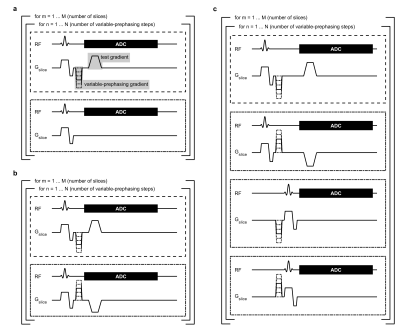 |
Measuring gradient waveforms effectively with fully compensated
variable-prephasing
Hannah Scholten1,
David Lohr2,
Tobias Wech1,
and Herbert Köstler1
1Department of Diagnostic and Interventional Radiology, University Hospital Würzburg, Würzburg, Germany, 2Chair of Molecular and Cellular Imaging, Comprehensive Heart Failure Center (CHCF), University Hospital Würzburg, Würzburg, Germany Keywords: Gradients, System Imperfections: Measurement & Correction Gradient inaccuracies often deteriorate image quality in non-Cartesian MRI, raising a demand for accurate gradient waveform measurements. The recently proposed approach of “variable-prephasing” provides an efficient gradient measurement technique with high SNR. However, the original variable-prephasing sequence neglects lingering field effects from the prephasing gradients, which we show to produce erroneous results if the gradient system exhibits sharp mechanical resonances. We therefore propose “fully compensated variable-prephasing” and demonstrate its ability to remove all field effects not stemming from the test gradient of interest. |
14:25 |
1233.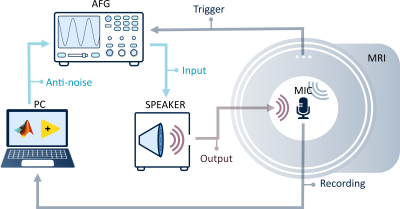 |
An experimental setup for acoustic noise reduction in MRI using
Predictive Noise Canceling
Paulina Siuryte1 and
Sebastian Weingärtner1
1TU Delft, Delft, Netherlands Keywords: Gradients, Gradients, acoustic noise Gradient acoustic noise in MRI remains a large source of patient discomfort, with sound pressure levels reaching 130dB. In this work, we explore Predictive Noise Canceling (PNC) to reduce the acoustic noise. The method, similarly to active noise canceling, uses anti-noise to create a quiet zone. However, PNC is based on a direct gradient noise prediction, and is hence robust to aperiodicity and latency. We use iterative equalization and external trigger signals to achieve improved signal fidelity. The method is, for the first time, applied regular MRI sequences, and achieves up to 13dB noise reduction in the 0.3-4kHz range. |
| 14:33 |
1234.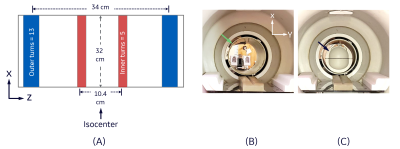 |
Prospective Compensation of Second-order Concomitant Fields in a
High-performance Gradient System using a Second Order Harmonic
Shim Coil
Afis Ajala1,
Seung-Kyun Lee1,
Nastaren Abad1,
Yihe Hua1,
and Thomas Foo1
1GE Global Research, Niskayuna, NY, United States Keywords: Gradients, Gradients, Concomitant Field Correction The use of higher-performance gradient coils results in stronger second-order concomitant magnetic fields, which can lead to image artifacts such as signal dropout, blurring, and phase errors that cannot be corrected by pre-emphasis of gradient waveforms and/or radio frequency modulation alone. We have developed an axially symmetric second-order field coil that is insertable, and demonstrate its ability to prospectively correct the additional phase generated by second-order concomitant fields in 2D phase contrast and spiral-out gradient echo imaging in a 3.0 T high-performance head-gradient (MAGNUS) system. |
| 14:41 |
1235.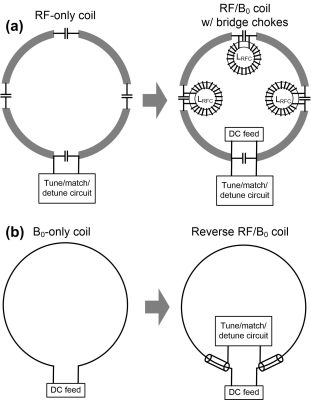 |
‘Reverse’ RF/B0 shimming coils
Xinqiang Yan1,2,
Shuyang Chai1,2,
Ming Lu1,2,
and John C Gore1,2
1Vanderbilt University Institute of Imaging Science, Vanderbilt University Medical Center, Nashville, TN, United States, 2Department of Radiology and Radiological Sciences, Vanderbilt University Medical Center, Nashville, TN, United States Keywords: Shims, Shims In this work, we propose a reverse RF/B0 shimming coil design for ultrahigh field MRI without using any large bridge choke inductors. Our simulation and experimental results reveal that this design does not impair the RF performance, but would able to reduce the DC resistance/inductance/heating and also save precious space in RF/B0 shimming coils. |
14:49 |
1236.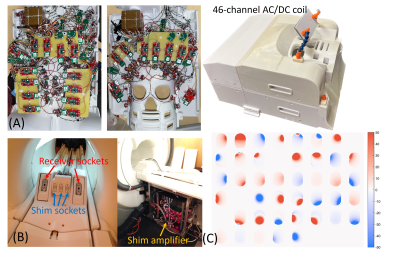 |
Flexible use of AC/DC coil for eddy-currents and concomitant
fields mitigation with applications in diffusion-prepared
non-Cartesian sampling
Congyu Liao1,2,
Jason Stockmann3,
Xiaozhi Cao1,2,
Zhitao Li1,
Lincoln Craven-Brightman3,
Monika Sliwiak3,
Charles Biggs3,
Zheng Zhong1,
Nan Wang1,
Hua Wu4,
Thomas Grafendorfer5,
Fraser Robb5,
Bernhard Gruber3,6,
Azma Mareyam7,
Adam B Kerr2,4,
and Kawin Setsompop1,2
1Department of Radiology, Stanford University, Stanford, CA, United States, 2Department of Electrical Engineering, Stanford University, Stanford, CA, United States, 3Athinoula A. Martinos Center for Biomedical Imaging, Massachusetts General Hospital and Harvard Medical School, Charlestown, MA, United States, 4Stanford Center for Cognitive and Neurobiological Imaging, Stanford University, Stanford, CA, United States, 5GE Healthcare, Milwaukee, WI, United States, 6BARNLabs, Muenzkirchen, Austria, 7Harvard Medical School, Charlestown, MA, United States Keywords: Shims, Shims This work provides a demonstration that the AC/DC shim-array can be flexibly used to correct undesirable eddy-current and concomitant fields effect in MRI acquisitions, with simulation results showing its effectiveness at mitigating eddy-current induced phase in diffusion-prepared acquisition and in mitigating concomitant fields in non-Cartesian trajectories, such as spiral. Phantom and invivo experiments were also performed on a 46-channel AC/DC shim-array to demonstrate high-fidelity multi-shot 3D diffusion-prepared acquisition without need for SNR-zapping amplitude stabilizer. |
| 14:57 |
1237.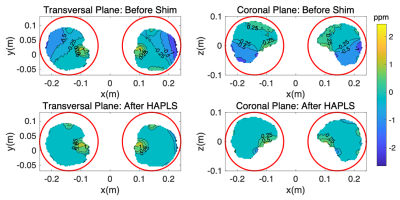 |
Hybrid Active and Passive Local Shimming (HAPLS) Targeting
Ultra-high-order B0 Spherical Harmonic (SH) Terms in Two-Region
MRI
Zhi Hua Ren1,
Jason Stockmann2,3,
Andrew Dewdney4,
and Ray F. Lee1 1Zuckerman Mind Brain Behavior Institute, Columbia University, New York, NY, United States, 2Athinoula A. Martinos Center for Biomedical Imaging, Massachusetts General Hospital, Boston, MA, United States, 3Harvard Medical School, Boston, MA, United States, 4Siemens Healthcare GmbH, Erlangen, Germany Keywords: Shims, Shims An MRI scanner equipped with global shim systems fails to reach state-of-the-art when shimming two isolated ROIs simultaneously for two reasons: non-optimal spherical harmonic based shimming routine, and significant high-order B0 inhomogeneities, even though the two-area shimming can be essential in scan scenarios, such as bilateral breasts or dyadic brains. To address these challenges, a hybrid active and passive local shimming (HAPLS) technique is proposed to shim two isolated areas in one FOV simultaneously. Both the simulation and experimental results validated that HAPLS can complementarily address the bifocal and high-order inhomogeneities, and locally improve in vivo B0 homogeneity as well. |
15:05 |
1238.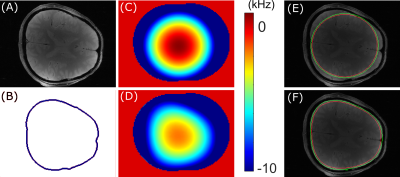 |
In vivo demonstration of arbitrary ROI shaping and B0 shimming
with MC-ECLIPSE for applications in human brain proton MRSI
Chathura Kumaragamage1,
Scott McIntyre1,
Terence W Nixon1,
Henk M De Feyter1,
and Robin A de Graaf1
1Radiology and Biomedical Imaging, Yale University, New Haven, CT, United States Keywords: New Devices, Spectroscopy ECLIPSE is a pulsed second order gradient insert that allows unparalleled extracranial lipid suppression over an elliptical ROI for applications in human brain proton MRSI. While ECLIPSE provides excellent axial slice coverage for brain shapes that closely resemble an ellipse, coverage is compromised for head shapes that are asymmetrical. We recently constructed an ECLIPSE gradient coil in combination with a 54-channel multi-coil array (MC-ECLIPSE) for human brain ROI shaping and B0 shimming. Here we demonstrate >95% axial slice coverage with ROI shaping over challenging head shapes, in addition to improved B0 shimming capabilities relative to second order spherical harmonic shims. |
| 15:13 |
1239.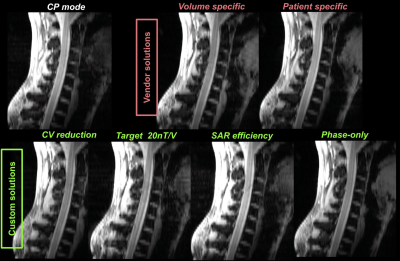 |
RF shimming in the spinal cord at 7T
Daniel Papp1,
Gaspard Cereza1,
Alexandre D'Astous1,
Eva Alonso-Ortiz1,
and Julien Cohen-Adad1,2,3,4
1NeuroPoly Lab, Institute of Biomedical Engineering, Polytechnique Montreal, Montreal, QC, Canada, 2Mila - Quebec AI Institute, Montreal, QC, Canada, 3Functional Neuroimaging Unit, Centre de recherche de l'Institut universitaire de gériatrie de Montréal, Montreal, QC, Canada, 4Centre de recherche du CHU Sainte-Justine, Université de Montréal, Montreal, QC, Canada Keywords: Parallel Transmit & Multiband, Spinal Cord Spinal cord MRI at 7T suffers from Tx inhomogeneity. RF shimming is therefore potentially useful in this region. Here, we evaluate for the first time the effect, both on signal intensity and signal homogeneity, of multiple RF shimming algorithms implemented in the open-source ‘Shimming Toolbox’, and compare the results with vendor solutions. |
15:21 |
1240.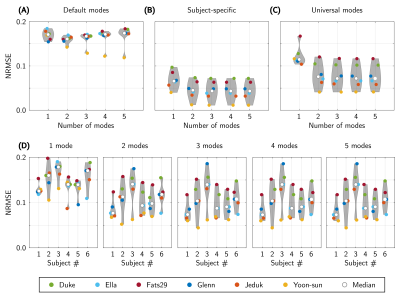 |
Universal modes: Calibration-free TIAMO for B1+ inhomogeneity
mitigation
Simon Schmidt1 and
Gregory J Metzger1 1Center for Magnetic Resonance Research, University of Minnesota, Minneapolis, MN, United States Keywords: High-Field MRI, Body In this work we introduce the concept of universal modes, which consists of the application of the universal pulse concept to time interleaved acquisition of modes (TIAMO). Based on simulated B1+ maps of a 16-channel body array at 10.5T, the ability to mitigate B1+ inhomogeneities is successfully demonstrated in six different human body models, targeting the pelvis. |
| 15:29 |
1241.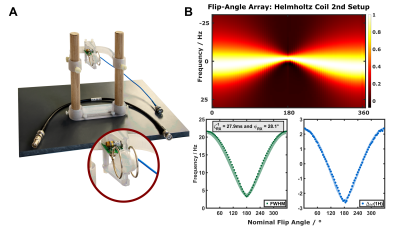 |
Radiation Damping at Clinical Field Strengths: How to Analyse
and Avoid it to enable quantitative MRI with Dedicated Coils
Niklas Wallstein1,
Roland Müller1,
André Pampel1,
and Harald E Möller1,2
1NMR group, Max Planck Institute for Human Cognitive and Brain Sciences, Leipzig, Germany, 2Department of Physics, Leipzig University, Leipzig, Germany Keywords: System Imperfections: Measurement & Correction, Ex-Vivo Applications, Radiation Damping Radiation damping (RD) is, in principial, well understood but commonly unconsidered in MRI. It results from inductive coupling of the spin system and the detection circuit, leading to nonlinearities in the Bloch equations. Previous research established that RD increases with the filling factor and quality factor of the coil and the magnetic field strength. However, little attention has been paid to a quantitative characterization. Moreover, implications for the RF pulse performance must be considered given similar timescales (milliseconds) of RD and pulse length. Our findings indicate that RD can impact typical MRI sequences and, consequently, parameters determined from their application. |
| 15:37 |
1242.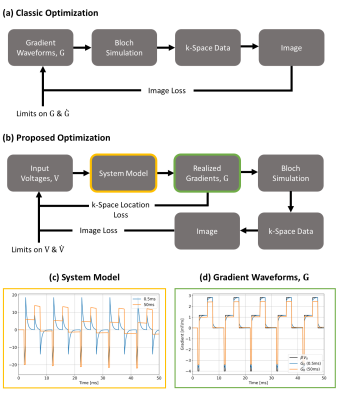 |
Overcoming system imperfections using end-to-end MR sequence
design.
Daniel West1,
Felix Glang2,
Jonathan Endres3,
Moritz Zaiss3,
Jo Hajnal1,4,
and Shaihan Malik1,4
1Department of Biomedical Engineering, King's College London, London, United Kingdom, 2Magnetic Resonance Center, Max Planck Institute for Biological Cybernetics, Tübingen, Germany, 3Department of Neuroradiology, Universitätsklinik Erlangen, Erlangen, Germany, 4Centre for the Developing Brain, King's College London, London, United Kingdom Keywords: System Imperfections: Measurement & Correction, Pulse Sequence Design MRI systems are usually engineered to give 'ideal' performance, and acquisition methods are generally developed using this assumption. This work proposes an alternative sequence learning framework that includes a model of realistic scanner performance, allowing acquisition sequences to be designed to directly account for system imperfections. In this proof-of-concept demonstration we designed pulse sequences to account for eddy current perturbations with different realistic time constants, while also respecting hardware limits. The flexibility of this approach could be used to design new types of pulse sequence to operate on lower performance, lower cost hardware in future. |
The International Society for Magnetic Resonance in Medicine is accredited by the Accreditation Council for Continuing Medical Education to provide continuing medical education for physicians.